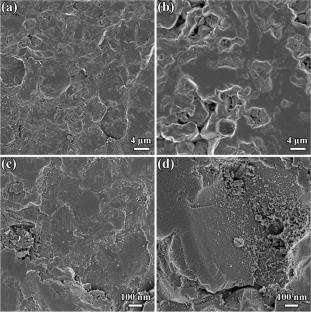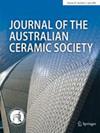This study assesses the influence of added iron (Fe) nanoparticles on the sinterability, microstructure, and mechanical characteristics of SiC-enforced ZrB2 ceramics. The specimens were sintered under 30 MPa at 1700 °C for 5 min using the spark plasma sintering method. The SiC-free sample presented near full density; however, the incorporation of SiC led to a ~ 3% drop of the relative density. Although SiC could remove the surface oxides, the generation of a noticeable volume of gaseous phases resulted in increasing the amount of residual porosity. According to the X-ray diffractometry, X-ray photoelectron spectroscopy, field emission scanning electron microscopy, and field emission electron probe microanalyses studies, the ZrFe2 and FeB compounds were generated as the in situ phases in the ZrB2-Fe specimen, whereas the chemical reactions among the available constituents led to the in situ generation of graphite, FeSi2, and Zr3Fe phases in the ZrB2-SiC-Fe composite. The SiC-reinforced sample achieved a Young’s modulus of 480 GPa and hardness of 29.4 GPa. Finally, the nanoindentation test was simulated using a 3D axisymmetric finite element model wherein the results obtained for the finite element modeling and load–displacement curve were in good agreement with the practical results. The mean values of elastic modulus, hardness, and stiffness in practical results were found to be 480 GPa, 29.4 GPa, and 0.72 mN/nm, while the corresponding ones in simulations were 571 GPa, 21.9 GPa, and 1.51 mN/nm, respectively.



